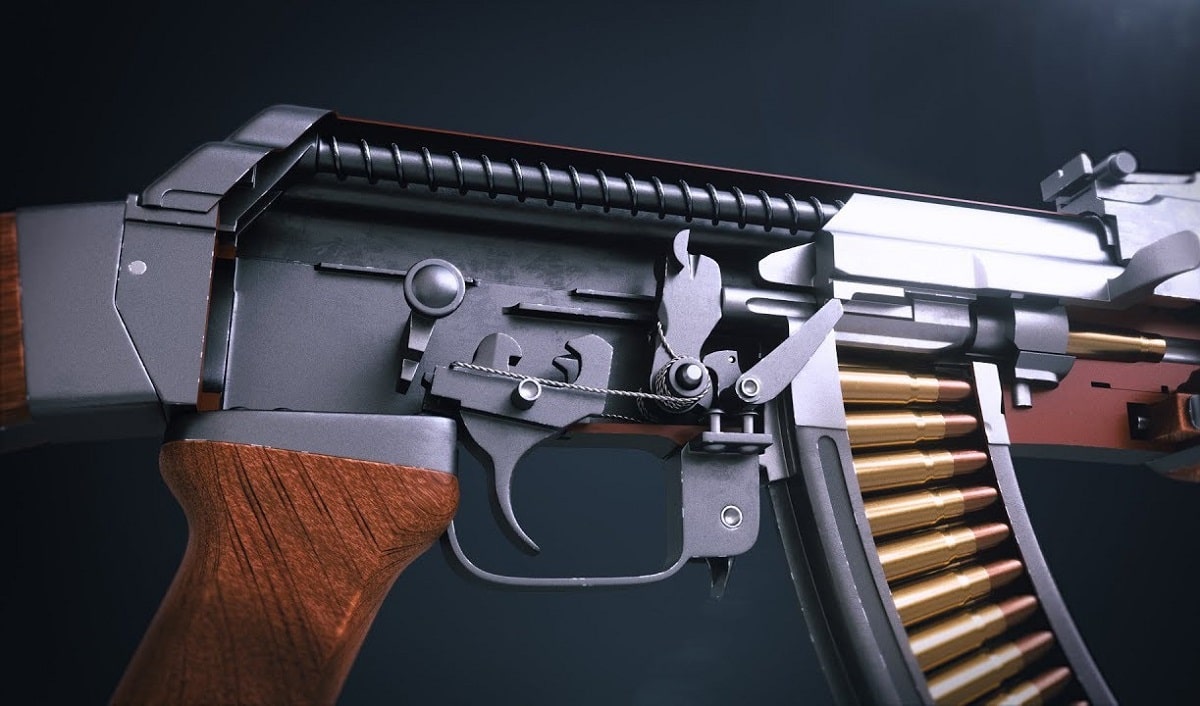The United States Army is currently engaged in a program to find a replacement for its M4 carbine and M249 light machine gun. The process has garnered much media attention, and the U.S. is far from alone in sharing details on what small arms it employs. Russia, China and other potential adversaries are actually quite open when it comes to weapons development.
During the early days of the Cold War, however, the situation was quite different. When Mikhail Kalashnikov set out to develop the AK-47 (Avtomat Kalashnikova) – likely with help from Hugo Schmeisser and others – the result was a radical departure from weapons of the era, and the Soviets did an excellent job of keeping it a secret. The new select-fire assault rifle–which was designed to be chambered in the then new 7.62x39mm intermediate cartridge–was known in the west when it was adopted in 1949.
In fact, it wasn’t until 1953 that the western intelligence community (IC) even received words that the Soviet Union had developed a new light rifle. It was in 2018 that Kalashnikov Media had published a scanned copy of a drawing made by a CIA agent who first spotted the AK-47 in 1953 after seeing it near the Leningrad and Novgorod oblasts (administrative divisions). According to the report, troops of the Krasnoselskiy Guards of the Order of Alexander Nevsky Regiment were spotted with what was described as a new gas-operated submachine gun.
It wasn’t a submachine gun, however, and while crude, the drawing clearly shows an AK.
The Soviets had done a very good job of concealing the existence of the firearm for years, perhaps in part because it took many years to produce enough to equip the army. While the drawings from 1953 were the first clue that a new weapon had been developed, the next glimpse of an AK-47 may have been in the 1955 Soviet comedy Maksim Perepelitsa, a film about a young man who was recruited from a Ukrainian village into the Soviet Army. While only seen in a few scenes, the AK-47 could be seen prominently.
Why Soviet censors allowed such a safely guarded secret to be openly displayed isn’t known, but the film likely wasn’t presented outside of the Soviet Union, and apparently didn’t even make the rounds in the Communist Bloc. Just one year later, however, the west was given a much more up close and personal view of the AK-47 when it was carried by Soviet soldiers during the Hungarian Revolution in 1956, which lasted from October 23 until November 10.
Interestingly, the weapon that would soon go on to be widely used in pro-Soviet revolutions, and which essentially became iconic around the world when used by the Viet Cong and other insurgents, was famously seen wielded by anti-Communist, anti-Soviet revolutionaries. Period photos even show that revolutionaries, including the dapper József Tibor Fejes, carried the AK-47. Fejes, just 22-years old at the time, fitting earned the moniker “Keménykalapos,” the man in the hat.
According to Máté Balogh, museum educator at the Hadtörténeti Múzeum (Military Museum) in Budapest, the AK-47 was used by the Soviet military, and hadn’t been issued to the Hungarian People’s Army, so any revolutionist that acquired one likely acquired it from a killed or surrendered Soviet soldier.
As author C.J. Chivers, who chronicled the history of the AK-47 in his book The Gun, noted about Fejes carrying an AK-47: “He did so before Fidel Castro, before Yasser Arafat, before Idi Amin. He was years ahead of the flag of Zimbabwe, which would expropriate the AK-47 as a symbol. He was ahead of Shamil Basayev and Osama bin Laden, who would convert the product of an atheist state into a sign of unsparing jihad. József Tibor Fejes was the first of the world’s Kalashnikov-toting characters, a member of a pantheon’s inaugural class.”
While it didn’t make the AK-47 infamous – that would take a few more decades and not to mention the appreciation of rappers and Hollywood – it did make the weapon iconic.
Peter Suciu is a Michigan-based writer who has contributed to more than four dozen magazines, newspapers and websites. He regularly writes about military small arms, and is the author of several books on military headgear including A Gallery of Military Headdress, which is available on Amazon.com.

